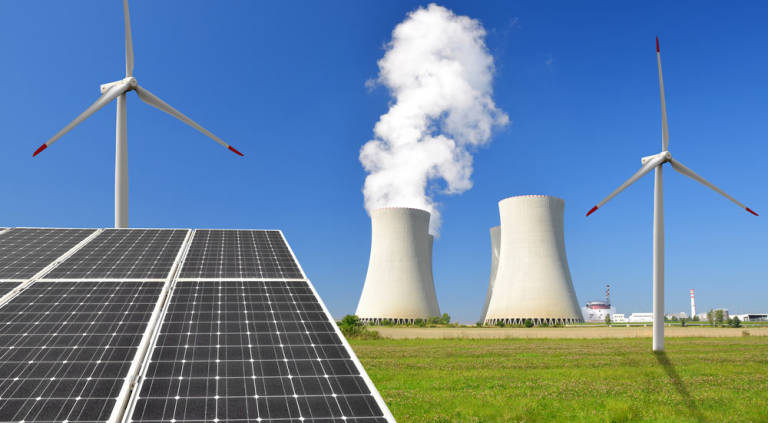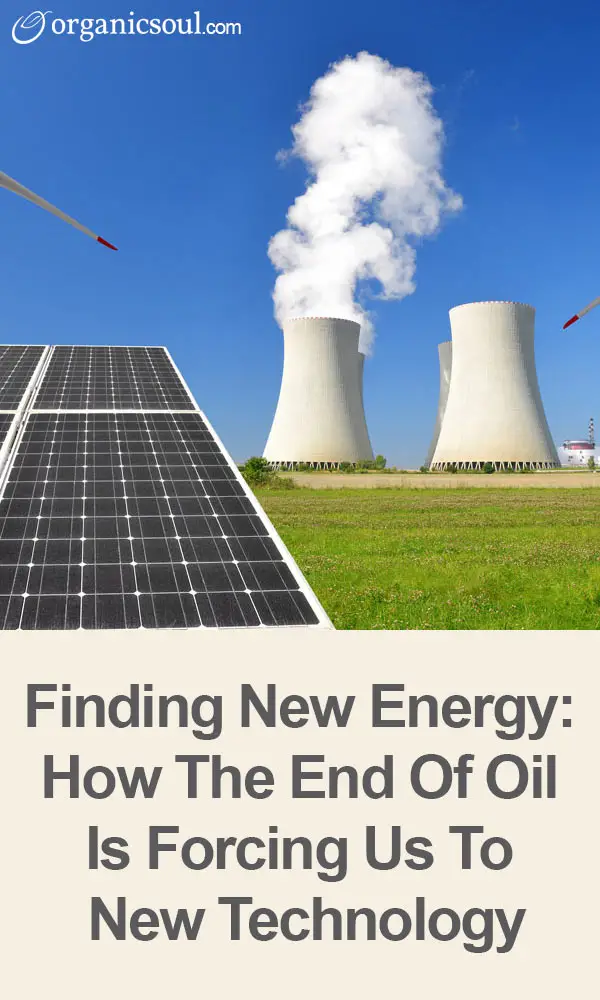
It has long been official: we need new sources of energy, and quick. According to some estimates, oil reached its peak output in 2010; to others, it saw its peak in 2006. But what remains constant among geologists and professionals alike is that the peak has passed, and we are now entering the second half of the life of oil, one that is characterized by elevated gas prices, climate change, and depletion.
Like Organic Soul on Facebook
Experts suggest that our atmosphere can take another 400 billion tons of carbon before we hit the point of no return. With the rest of the oil in the world, we are able to put out another 700 billion alone, not to mention coal, natural gas, and other forms of traditional energy, which combine to give us a total of 3500 billion tons of possible carbon output. Terrifyingly, we can cook our planet to a crisp a few times over; it just depends on if we let that happen. As one geologist put it, if we continue on the path we are on, we will spell the end to our economies, destroy our planet, and completely decimate our ecosystems.*
Given the gravity of the situation, we need new, clean energy, and we need it now. There will be no single source for this energy, and we need to begin to conserve and cut back in other areas too.
Solar Energy
The first option is solar. Solar energy is beneficial because as long as we have the sun we have a source. Furthermore, it is a clean energy, meaning it does not release carbon dioxide or other green house gases. Creating the equipment and infrastructure for it will, but it is a necessary investment. Besides, the cost will pay itself back over the life of the solar cells.
Solar panels also require little maintenance and up-keep. Our technology today has them lasting well into 20 years and even more for some equipment.
The major downfall to solar cells is the cost and their limitations. They can be tremendously expensive, and without sunlight, they are essentially useless. Further, they require a large system to truly be effective. Simply because it is green doesn’t mean it is perfect, which is why we need to implement more alternatives all together.
Wind Power
Wind energy is the next viable solution. Like solar, the best thing about wind energy is that the only carbon dioxide emitted will be from installing the turbines in the first place – the actual production of energy, though, does not emit any gases for chemicals.
Wind energy is also based off of relatively simply technology, making it cheap and cost effective. A single farm can power itself along with a few other homes near it. The best part: wind power will be available as long as breeze is blowing.
However, this does reveal some down falls. The turbine require wind; otherwise, they’re as useful as solar panels on cloudy day. Also, the turbines can get destroyed by storms or lighting. Sound pollution is also an issue – not to mention aesthetic beauty of the land. While both of these are up to individual opinion, it’s clear wind is not a single solution.
Ending Urban Sprawl and Refurbishing Neighborhoods
Perhaps one of the most essential factors of limiting green houses gases is stopping urban sprawl, both in the United States and abroad. Essentially, urban sprawl is just what is sounds like – the rapid spreading of cities and infrastructure in all directions. This has been largely fueled by two major facets of our modern era: cheap gas prices and an unquenchable thirst for housing and land. Today, however, it’s clear that neither one of those exists in their same form.
Urban sprawl, by definition, destroys environments, requires tons of energy, and is largely unsustainable. Like oil, there is a finite amount of habitable land on the planet.
Ending urban sprawl, then, is essential. This may be already underway, simply because the demand has dropped so readily. A second necessity though is going back a refurbishing those urban neighborhoods with energy efficient homes and buildings. Green community development will help both the planet and the people. Let’s get on it.
Why Not Nuclear?
While nuclear energy emits low levels of carbon dioxide, it is tremendously powerful and the technology is already available to us. However, several aspects of nuclear energy contradict sustainability and green technology.
First, nuclear waste is a serious problem and there is no “good way” to dispose of it. It is extremely toxic, will leach into water supplies, and in effect will eventually lead back to us. In a similar vein, if a nuclear power plant were to have an explosion or serious malfunction, there could be irreversible damage. Second, it requires uranium, which is a nonrenewable, limited resource. Nuclear energy is no savior. See
Looking to The Future With Hope
With enough vigor, humankind will not need to fear extreme and catastrophic climate change. The solution is found in alternative forms of energy, reforming our current practices , and becoming more aware of what it is we are doing to planet that has served as our womb for millions of years.
, and becoming more aware of what it is we are doing to planet that has served as our womb for millions of years.
All we can really do is pressure our governments and hope for the best outcome possible. Now is the time we need to act. Truth is, anyone under the age of 60 will see the end of oil. I mean the end. Imagine a world without gasoline, and now imagine the race of countries in getting to the last of it. Let’s not let a stupid addiction to old plankton seal the fate for our entire species.
*For more info, see the ABC special The End of Oil
















